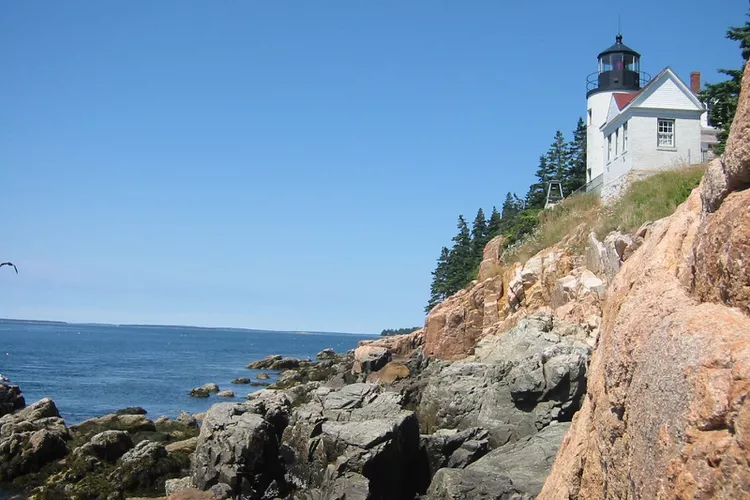Summary
- Acadia National Park
- Biscayne National Park
- Congaree National Park
- Cuyahoga Valley National Park
- Dry Tortugas National Park
- Everglades National Park
- Great Smoky Mountains National Park
- Hot Springs National Park
- Isle Royale National Park
- Mammoth Cave National Park
- Shenandoah National Park
- Virgin Islands National Park
- Voyageurs National Park
The Eastern United States showcases an extensive range of ecosystems, from the rugged coastline of Maine to the sandy beaches of the Virgin Islands. This region also encompasses diverse landscapes, including a vast tropical swamp and an extensive 356-mile-long cave system.
While the national parks in the Eastern U.S. tend to be smaller and less prominent than their western counterparts, several truly stand out. Notably, Great Smoky Mountains National Park draws more visitors annually than any other park in the nation’s system. Whether you are a local resident seeking a nearby adventure or a traveler exploring the area, each of these national parks provides unique and stunning experiences.
Acadia National Park

Address: Maine, USA
Phone: +1 207-288-3338
Acadia, while being one of the more compact national parks, is recognized as one of the most visually stunning. The park beckons visitors for its remarkable foliage in the fall or for cooling off in the Atlantic during summer. Quaint seaside communities offer antique shops, fresh lobster, and homemade fudge, while the park itself features rugged trails suitable for both hiking and biking.
Biscayne National Park

Address: Florida, USA
Phone: +1 305-230-1144
Biscayne features an intricate ecosystem teeming with vibrantly colored fish, uniquely formed coral, and extensive seagrass meadows. This park serves as an ideal location for outdoor aficionados interested in aquatic pursuits or individuals who wish to relax while gazing out over the bay.
Congaree National Park

Address: South Carolina, USA
Phone: +1 803-776-4396
Congaree Swamp conserves the largest unaltered tract of old-growth bottomland hardwood forest in the United States along with numerous species of flora and fauna associated with an alluvial floodplain. Home to some of the tallest trees in the East, it boasts one of the world’s highest canopies. Although it’s not a true swamp, it is recognized as an International Biosphere Reserve and National Natural Landmark.
Cuyahoga Valley National Park

Address: Ohio, USA
Phone: +1 440-717-3890
Although it may surprise some, a national park exists in northeastern Ohio. More surprising is its unexpected beauty. Unlike vast wilderness parks, this one features serene and isolated hiking trails, hills blanketed with trees, and tranquil marshlands populated by beavers and herons. Consequently, it serves as a peaceful refuge while also providing ample options for more adventurous activities.
Dry Tortugas National Park

Address: Dry Tortugas National Park, Florida, USA
Situated in the Gulf of Mexico, roughly 70 miles west of Key West, the Dry Tortugas National Park comprises a seven-mile-long chain of islands. This park functions as a sanctuary for both avian and marine life, featuring some of the most pristine coral reefs remaining along North American shores. Furthermore, its historic narrative includes tales of pirates, sunken treasures, and a military legacy.
Everglades National Park

Address: 40001 State Hwy 9336, Homestead, FL 33034, USA
Phone: +1 305-242-7700
Everglades National Park is recognized as one of the most threatened national parks in the United States. Urban development in southern Florida has intensified the diversion of freshwater with levees and canals, resulting in a critical reduction of the park’s wetland habitats due to insufficient water flow.
Great Smoky Mountains National Park

Address: United States
Phone: +1 865-436-1200
Great Smoky Mountains National Park holds the title of the most visited park in the United States, attracting over nine million visitors each year. Encompassing 800 square miles of mountainous terrain, it protects some of the most exquisite deciduous forests worldwide.
With a staggering 800 miles of hiking trails, it is noteworthy that a majority of visitors prefer to take in the scenic views from their vehicles. Nonetheless, this internationally recognized biosphere reserve houses an unparalleled diversity of plant and animal life, deserving more than a mere drive-through.
Hot Springs National Park

Address: 369 Central Ave, Hot Springs, AR 71901, USA
Phone: +1 501-620-6715
Unlike many national parks that encompass remote territories, Hot Springs National Park presents a unique situation as it borders an urban area. This compact national park, spanning 5,550 acres, is situated adjacent to a city that leverages the natural mineral-rich waters found within the park.
Isle Royale National Park

Address: Michigan, USA
Phone: +1 906-482-0984
Rising from the expansive Lake Superior, Isle Royale offers an isolated national park experience. Visitors often spend three to four days exploring this 45-mile-long island, which is packed with outdoor activities to enhance their stay.
Mammoth Cave National Park

Address: Kentucky, USA
Phone: +1 270-758-2180
With more than 365 miles mapped of the world’s longest cave system, it is astonishing that new caves are still being discovered. This national park offers visitors an opportunity for guided tours and hiking adventures within the earth, examining eroded limestone located 200 to 300 feet below ground.
Shenandoah National Park

Address: 3655 US-211, Luray, VA 22835, USA
Phone: +1 540-999-3500
Portions of Shenandoah National Park originally comprised farmland and timber-producing forests. Today, it is often difficult to discern the remnants of farming, logging, and grazing as most of the area consists of regrown forest. The park is now interlaced with 500 miles of rugged trails, including 101 miles of the Appalachian Trail, and acts as a sanctuary for numerous wildlife species.
Virgin Islands National Park

Address: St John, USVI
Phone: +1 340-776-6201
Visitors need not venture outside the continental United States to enjoy a pristine beach embellished with soft, white sand and surrounded by clear turquoise waters. Virgin Islands National Park, situated on the Caribbean island of St. John, presents a small yet vivid escape, encompassing the pleasures of island life.
Voyageurs National Park

Address: Minnesota, USA
Phone: +1 218-283-6600
Voyageurs National Park consists of one-third water, primarily contained within four main interconnected lakes. Numerous forested areas, visible from above, resemble a grand jigsaw puzzle. With over 30 lakes and more than 900 islands, Voyageurs offers an undeniably distinct experience for park visitors.





